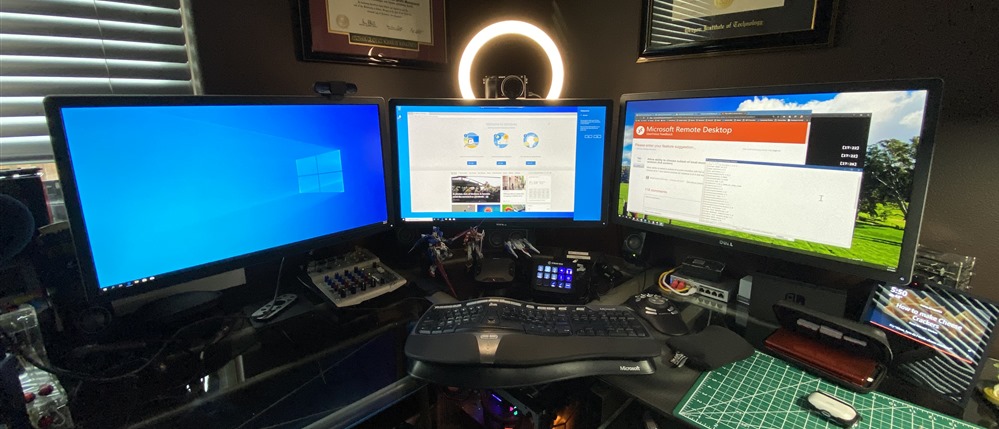
Like most IPS panels, it isn't ideal for dark rooms because it has a mediocre contrast ratio that makes blacks look gray. It also has built-in speakers and a Virtual Scale feature that lets you preview documents in their actual sizes before printing. There's a USB hub with four USB 3.0s and a USB-B upstream port, which means you can plug your peripherals or dongles into the monitor and have only a single USB cable leading to your PC, giving you extra ports and keeping your setup clean. It has wide viewing angles that make it great for sharing content, and it gets bright enough to provide good visibility in well-lit settings. It means you get plenty of room for multitasking, text looks sharp, and the monitor feels a tad more responsive than a typical 60Hz display. It's a 27 inch model with a 1440p resolution and a 75Hz refresh rate. The best secondary monitor we've tested in the budget category is the ASUS ProArt Display PA278QV. Best Budget Monitor For Dual Setup: ASUS ProArt Display PA278QV.It's an impressive monitor, and it's an outstanding choice for a dual monitor gaming setup. It's fine for fast-paced games like MOBAs, but it's not ideal for more scenic games like RPGs.
Mac dual monitors change side 1080p#
The 1080p native resolution is also a bit low, as it doesn't deliver a very immersive gaming experience. Unfortunately, it's not as well-suited for dark room gaming, as it has a low contrast ratio, so blacks look gray in a dark room. It also has good connectivity, but like most monitors on this list, it doesn't support daisy-chaining, so you'll need to make sure your source has multiple output ports or that your other monitor supports daisy-chaining. It has outstanding ergonomics, thin bezels, and it can rotate to portrait orientation in either direction, so you can choose which way you want the inputs to face. It has low input lag, ensuring a responsive gaming experience, and it supports both FreeSync and G-SYNC Compatible variable refresh rate technology, resulting in less tearing in some games.

It's an outstanding gaming monitor with an extremely fast refresh rate and outstanding motion handling, resulting in crystal-clear motion with almost no noticeable blur behind fast-moving objects. The best dual monitor for gaming we've tested is the ASUS VG279QM.

It also has a few helpful connectivity options, including two HDMI ports and a USB-C port that supports up to 65W of power delivery, so you can charge your computer while working. It has great peak brightness and good reflection handling, meaning it can easily overcome glare in brighter viewing environments. It has great horizontal and vertical viewing angles, ensuring the image remains accurate even if it's placed at an angle. It has very good ergonomics, and it can rotate to portrait orientation in either direction. It has a 4k native resolution resulting in fantastic text clarity and sharp images. If you want something with a higher native resolution, then check out the Dell S2722QC.

Overall, this monitor is the best dual monitor setup for office use that we've tested. Sadly, the ASUS has mediocre contrast, so it's not the best choice for a dark room, and it doesn't support HDR. It also has a very versatile stand with fantastic ergonomics, so if you decide to mount it vertically, you can rotate it in either direction. It has excellent accuracy out of the box, great if you rely on accurate colors. It has excellent gray uniformity and impressive gradient handling, so you don't have to worry about dirty screen effect or banding in areas of similar colors. It also has a DisplayPort Out port that's supposed to allow you to daisy-chain multiple displays, but we couldn't get it to work. It also has a built-in USB hub, with four USB 3.0 ports and a USB-C input. It's impressive for office use, with wide viewing angles, superb ergonomics, and great connectivity. It's a great monitor with a 27 inch, 1440p screen that delivers decent text clarity. The best monitor for dual setup we've tested for office use is the ASUS ProArt Display PA278CV.


 0 kommentar(er)
0 kommentar(er)
